While few guitarists make the acoustic 12-string their primary axe, the instrument has left its unmistakable—often beautiful—sonic imprint on innumerable songs in just about every musical style. Whether providing jangling accompaniment for a rock ballad, sparkling orchestration for a singer-songwriter, gritty riffs for acoustic blues, or ringing counterpoint for virtuoso fingerpickers, a 12-string has a way of making music come alive.
In the long history of the acoustic guitar, 12-strings are a relatively recent phenomenon. Its exact origins are not completely clear, though Oscar Schmidt 12-strings made in the 1910s are generally considered the first commercially available acoustic 12s. Most other companies didn’t really pick up on the concept until much later, however. The most famous early 12-string player was blues singer Lead Belly, and when he was “rediscovered” during the mid-century folk boom it propelled new interest in the instrument’s sonic potential. Companies like Gibson, Guild, Harmony, and Martin scrambled to introduce 12-string models to meet the sudden demand.
A 12-string isn’t the easiest guitar to play—especially when the action is less than perfect—and traditional 12-string thinking dictates that, when it comes to playability, you get what you pay for. But the improvement in craftsmanship we’ve seen in affordable 6-strings is popping up in inexpensive 12-strings too, which adds up to some enticing options if you want an affordable 12 of your own.
I’ve long been a 12-string fan, and I frequently use my own Taylor 355 (which I kept handy as a point of reference while checking out the guitars in this review) for gigging and recording. So I was excited to investigate the current state of affordable 12-strings. I played each of our review guitars tuned to standard pitch (rather than tuning lower than A-440, a practice common with many 12-string players), using both flatpick and fingerstyle technique. I also tested each through an AER Compact 60 amp. The results, for anyone interested in an accessibly priced 12-string, are encouraging. Indeed, there’s a lot of great jingle-jangle out there to be had on the cheap.
Breedlove Pursuit 12-String
Breedlove is known for an innovative and original approach to flattop design, and 12-strings have been part of the company’s offerings since its inception in the early ’90s. Breedlove was synonymous with high-end instruments for years, but for the last decade or so, Breedlove has also offered affordable imported guitars, including the Chinese-made Pursuit series.
The Pursuit 12-String is instantly recognizable as a Breedlove, thanks to its distinctive headstock and cutaway shapes. The guitar also distinguishes itself from the majority of affordable 12s with a concert-size body that measures 15.5" across the lower bout. Many guitar makers would shy away from building a 12-string with a small body like this for fear of losing power and bass response. But Breedlove’s internal bridge truss system (which uses a wooden dowel to connect the bridge with the end-block to transfer energy to the sides), is designed, in part, to help generate extra bottom-end. So if anyone can pull off a full-sounding, small-bodied 12, it’s these guys.
Built with a solid Sitka spruce top, laminated sapele back and sides, a nato neck, and rosewood fretboard and pinless bridge, the Pursuit 12 has a 25.5" scale and a neck that measures 1 7/8" at the nut. Visually speaking, the woods are typical for the price range. They’re fairly plain in appearance and the three sections used to build the neck are clearly visible. Visual flash aside, the craftsmanship on the Pursuit 12 is very clean throughout.
Ratings
Pros:
Balanced tone, playing comfort, USB output. Nice price.
Cons:
Not super loud.
Tones:
Playability:
Build/Design:
Value:
Street:
$499
Breedlove Pursuit 12-String
breedloveguitars.com
The guitar includes Fishman Isys+ electronics, which include an under-saddle pickup, a side-mounted preamp with a chromatic tuner and controls for volume, bass, treble, and phase. More surprisingly, in addition to the standard 1/4" jack, it has a USB output that allows you to plug the guitar into your computer for recording and signal processing.
If you’ve tried 12-strings in the past but found them cumbersome, the Pursuit 12-String may be the answer to your prayers. Like most concert-size guitars, the Pursuit 12 is very comfortable to hold, and if you’re a player of smaller stature, you might find you can play parts you couldn’t pull off on a larger instrument.
Our Breedlove was set up with low action, and the playability was excellent. Tonally, the guitar had a clear, balanced voice that worked great for fingerstyle or single-note playing. There is a certain delicate quality to the Pursuit’s sound that’s lost if you really lay into the strings with a flatpick. But overall, the Pursuit 12-String was a lot of fun to play.
Boasting a USB port next to the 1/4" output, the guitar’s Fishman electronics would have been science fiction (or blasphemy) not too long ago. But the USB connection is easy to use. My MacBook Pro (running GarageBand) recognized the guitar immediately when I plugged it in, and I was able to record with it right away. While the results won’t replace a microphone for serious recording applications—playback left no doubt that I was hearing a pickup—having this option is a great addition for casual home recording or capturing ideas on the fly.
Auditioned through my AER Compact 60 amp, the guitar also left a positive impression with a bright, but reasonably complex voice that worked well for the more delicate playing that’s the Pursuit 12-String’s strength.
A Short 12-String Listening Guide
One of a 12-string’s most magical properties is how it can add texture and motion to pop and rock arrangements. It has an almost orchestral personality in these settings, filling in a high-mid frequency that goes missing in most bass/guitar/drums arrangements while providing an airier low-mid presence that can be really propulsive when you strum a part.
Jimmy Page is one of the acknowledged masters of this record-making art, and his work on Led Zeppelin II, III, and Houses of the Holy in particular showcase this talent. But it’s a safe bet that Pagey was paying close attention to the work of Tim Buckley. Buckley’s 12-string work on his underrated psychedelic masterwork Goodbye and Hellois a virtual clinic on how the 12-string can lend a song thrust (“I Never Asked to Be Your Mountain”) and abstraction (“Hallucinations”).
Another, more celebrated production team that knows how the 12 can add shimmer and propulsion to a simple pop-rock production is Tom Petty and Jeff Lynne, and Petty’s Full Moon Fever is brimming with examples of this production philosophy, including “Face in the Crowd” and the ubiquitous “Free Fallin’.”
The 12-string’s appeal to soloists is obvious—one player can make a whole lot of racket and fill a lot of space with those twelve vibrating wires. Leo Kottke and Ralph Towner are among the most legendary 12-string acoustic soloists. But more recent solo adventurers have put the 12 to work in interesting ways. James Blackshaw’s O True Believers showcases how an open-tuned 12-string acoustic can become a cathedral of sound in the hands of a visionary player.
And all modern explorers of the open-tuned 12-string acoustic owe a debt of gratitude to the great Robbie Basho, who’s fascination with Indian classical music and 12-strings (often tuned to variations of open C) combined to create some of the most expansive and transportive solo guitar ever committed to record. Any of Basho’s LPs on Takoma are essential listening, but the compilation CD Bashovia, which includes Indian-influenced pieces like “The Hajj” and “Khatum,” as well as the ferocious, nine-minute-plus “The Falconer’s Arm” is a great place to start.
For evidence of how a 12-string acoustic can transform the work of a singer-songwriter, look no further than Neil Young. His Taylor 855 12 becomes a river of sound for his high-plains ramble “Thrasher” on Rust Never Sleeps—simultaneously sparkling and rolling mightily like late-afternoon sun on a wind-rippled Mississippi. —Charles Saufley
Fender CJ-290SCE-12
The combination of a jumbo body and maple back and sides is a classic recipe for a great sounding 12-string. One of the instrument’s definitive blueprints, it has been used on iconic and significant 12s like the Guild F-412 and Taylor 655, and it’s a cool recipe for the CJ-290SCE-12 reviewed here.
With a width of 16 1/4" at the lower bout, the CJ-290SCE-12 isn’t as wide as some jumbos. But because its waist isn’t as pinched as some jumbos, the surface area of the top and internal volume is comparable to bigger-looking guitars (it also leads to a somewhat stout appearance). The maple used for the back and sides is laminated, which lets Fender to use an outer veneer of highly flamed wood and give the guitar some flash without driving the price through the roof.
The CJ 12 has a solid Sitka spruce top, and the top on our review guitar was particularly nice, with even grain over the entire soundboard. The guitar’s neck is also made from maple (though our guitar revealed significant color irregularities between the woods used on the neck itself and the heel), and the fretboard and bridge are made from rosewood. Fender added some cool details that enhance the up-market look and feel of the guitar, including an abalone rosette, white fretboard and body binding, black-and-white purfling, and gold tuners.
Ratings
Pros:
Classic 12-string vibe. Versatile sounds.
Cons:
Preamp placement somewhat awkward.
Tones:
Playability:
Build/Design:
Value:
Street:
$549
Fender CJ-290SCE-12
fender.com
This Fender also comes loaded with Fishman’s Presys electronics package, which includes an under-saddle pickup and a side-mounted preamp with a chromatic tuner and controls for volume, bass, middle, treble, and phase.
If you’ve ever played one of the classic maple 12s, you’ll likely find the CJ-290SCE-12 familiar in feel and tone. The jumbo body and chunky D neck profile (measuring 1 7/8" wide at the nut) make the Fender feel substantial. And the blend of the large body’s low-end capacity and the maple’s dry, reactive brightness give the guitar an expansive tone palette.
Set up with medium action, the CJ-290SCE-12 is jangly and sparkling when strummed, and its note-to-note definition is very good when played fingerstyle. The guitar is most responsive to a heavy attack and sounds best at the volumes you get from an aggressive fingerstyle approach. Still, it sounds fairly complex when played softer.
Plug the guitar in and you flip the equation a bit: Through an amp, it sounds best with a softer approach. The combination of maple, spruce, and the Fishman system sounded bright and snappy when I dug in with a pick, but very sweet and balanced when I played softer fingerstyle pieces.
The onboard EQ proved helpful for adapting the guitar to different playing styles, but I found the preamp’s placement in the lower bout area of the side to be awkward in terms of reaching the controls and reading the onboard tuner’s display. Those small gripes aside, it’s hard to find fault with the CJ-290SCE-12. And it offers stage-ready practicality and classic 12-string vibe—both in terms of appearance and sound—for a very reasonable price.
Martin D12X1AE
Martin began building 12-strings at the height of the folk boom in 1962, meaning the company has nearly as much experience with this instrument type as, well, just about anybody. Traditionally, most Martin 12-strings were built on the 12-fret dreadnought platform with a short scale, but our review D12X1AE uses the more contemporary 14-fret dreadnought design and Martin’s longer 25.4" scale.
What’s more unusual about the instrument (at least with respect to its Martin heritage) is its construction: Like all X-series guitars, the D12X1AE uses back and sides of high pressure laminate (HPL), a material derived from wood fibers and synthetic resin, and covered with a wood-like finish, which, in the case of the D12X1AE, is made to look like mahogany.
The guitar’s neck is made out of Stratabond, which consists of multiple thin layers of wood that are laminated to form a solid and extremely stable material (a real plus given the added tension of a 12-string). The guitar’s fretboard and bridge are made from black Richlite, which again is a wood fiber and resin combination that’s finished under pressure and high heat. Traditionalists may have already stopped reading, but if you’re still with me, please note that the top—the heart of any acoustic guitar—is made from solid Sitka spruce and features Martin’s A-frame/X hybrid bracing pattern.
Ratings
Pros:
Killer strummed sound. Excellent quality.
Cons:
Traditionalists may not like the high-tech materials.
Tones:
Playability:
Build/Design:
Value:
Street:
$649
C.F. Martin D12X1AE
martinguitars.com
The Martin has an austere appearance. There’s no inlay in the fretboard (but there are position dots on the side of the fretboard), no binding, and a simple rosette. The guitar includes a Fishman Sonitone electronics system, which consists of an under-saddle pickup, a small module with volume and tone controls mounted inside the edge of the soundhole, and a 9V battery mounted inside the body.
The Martin’s craftsmanship was meticulous inside and out, and while the look of the Stratabond neck may not be everyone’s cup of tea, the D12X1AE’s back and sides look a lot like high-quality mahogany. The Sitka spruce top was nicely bookmatched too.
Picking up the guitar to play, I was greeted with typical Martin dreadnought feel. Even though the neck is wider than a 6-string’s (1 7/8" at the nut), the D12X1AE’s neck felt a lot like other contemporary Martins that feature the company’s “low profile” shape. Our review guitar was set up with medium action, and while this required a bit more effort, it’s basically a very playable guitar.
Tonally, the Martin has a lovely, dark-ish voice. It takes a bit of attack to coax out its best qualities, but it possesses a nice warmth in fingerstyle situations when you use a slightly heavier approach. Strummed with a pick, the instrument sounded great. A solid stream of loud, fat, balanced tones emanated from the guitar’s top, and I’ll bet the Martin would surpass many pricier 12-strings in terms of volume and color in strumming situations.
I was pleased to discover that the guitar’s Fishman electronics faithfully communicated these qualities through my AER Compact 60. The system’s simple tone control enabled me to easily fine-tune the guitar’s high-end response to suit the strength of my attack. And in general, plugging the guitar in reinforced my impression that the D12X1AE could be a stage workhorse—especially for strummers.
More Acoustic 12-string Options
While the four 12-strings in our roundup are all great choices in the $400–$700 range, there are many other options if you’re willing to spend just a bit more or need to dish out a little less.
For many players, the big news in accessibly priced 12s for 2014 is the May debut of the Taylor 150e 12-string dreadnought. The solid Sitka spruce and laminate sapele 12 will be priced in the neighborhood of the other dreads in the 1 series, which all run well south of a grand and can be had for as little as $599 on the street. (taylorguitars.com)
Blueridge builds one of the broadest and most appealing ranges of affordable-to-mid-priced 12s out there, including six beautiful jumbo 12s that run from about $599 on the street to the low-mid $1,000s. (sagamusic.com)
Guild is virtually synonymous with acoustic 12s, and in addition to their legendary American-made 12s, they also offer a line of affordable import 12s. These include the $629 all-mahogany D-125-12 dreadnought and the fancy F-1512E jumbo, priced at around $1,500. (guildguitars.com)
The most affordable end of the 12-string market offers ample options to players on a tight budget or those who want to try an inexpensive 12 before diving into the expensive end of the pool. Recording King’s RD-06-12, which is built with a solid Sitka spruce top is one of the best 12 string deals out there at just $349 on the street. (recordingking.com)
Yamaha’s FG720S-12 is just one of several 12s the company offers in the sub-$1,000 range, but at just $349, this solid spruce-topped dreadnought is a great deal. (usa.yamaha.com)
Washburn’s WD10SCE also can be had for around $350, and you get a cutaway and Fishman Isys electronics. (washburn.com)
At just $199, Epiphone’s DR-212 dreadnought is about as inexpensive as a new acoustic 12 gets. So why not join the jangle party? (epiphone.com)
Seagull Coastline S12 Cedar QI
When it comes to bang-for-the buck acoustics, Canada’s Seagull guitars (and guitars from Seagull’s Godin-built cousins Simon & Patrick and Arts & Lutherie) often top many people’s lists. Seagulls are famous for combining no-nonsense design and great woods, and delivering excellent sound and feel at affordable prices.
Essentially a 12-string version of Seagull’s popular S6, the Coastline S12 Cedar is a dreadnought built almost entirely with Canadian woods: A solid cedar top, wild cherry back and sides, and a silver leaf maple neck. Typical of most Seagulls, the guitar has a short, 24.84" scale and a tapered headstock that ensures an almost-straight string path from the nut to the tuning machines. With a satin finish and basic appointments, including a herringbone rosette and simple white binding on the body, the guitar has a very get-down-to-business vibe that’s honest, and seems to say, “Hey, I’m a tool for making music. Let’s get to work!”
Our review guitar included the optional EPM Quantum I electronics, which includes an under-saddle pickup and a side-mounted preamp with controls for volume, bass, treble, and a built-in chromatic tuner. The system is powered by a 9V battery concealed in a dedicated compartment just adjacent to the endpin-jack.
Our review Coastline S12 is set up for some of the easiest-playing action I’ve come across on a 12-string. Combined with the short scale, this makes exploring the rosewood fretboard a delight. Like most Seagulls, the Coastline S12’s neck profile feels a little wide and chunky, and the nut width of 1.9" is certainly on the wider side of the spectrum—even for a 12-string.
Ratings
Pros:
Great fingerstyle sound and easy playing setup. High-quality materials.
Cons:
Onboard tuner hard to read. Noisy electronics.
Tones:
Playability:
Build/Design:
Value:
Street:
$629
Seagull Guitars Coastline S12 Cedar QI
seagullguitars.com
With its smooth-turning enclosed chrome tuning machines and carefully cut nut slots, the guitar was easy to tune, but I found the onboard tuner to be less helpful than it could be. The tiny display made it hard to see whether a string was going sharp or flat, and I had to strike the string more frequently than with most modern tuners to keep the display active. There’s also no “auto-off” function, and when I accidentally left the tuner’s button engaged, it drained the battery, leaving the entire system dead.
Cedar tops are known for quick response, and the Seagull Coastline S12 is no exception. It’s both dynamic and complex when played with a soft touch and invites fast fingerstyle work. In fact, I’d barely acquainted myself with the guitar before I dove into the up-tempo “Don’t Think Twice It’s Alright,” and a Ralph Towner-inspired improvisation.
When I got out a pick to strum the guitar, I was reminded that great response in the low end can lead to some compromises in definition when using a heavy pick attack. Bashing out chords meant less coherent tone and some buzzing, and the Seagull’s low action emphasized the trade-off. Plugging into my AER Compact 60 amp emphasized the Seagull’s preference for a softer attack even further. In this context, I had difficulty achieving a natural sound with anything but the softest attack, and I also found that the EPM system was a bit noisier than most contemporary pickup systems, with a slight hiss audible at higher volumes.
I’m certain that slightly higher action would improve the Seagull’s amplified performance. And if amplification is a primary criterion in your 12-string search, you may consider getting a Seagull sans stock electronics and adding your own. But if your playing depends on touch sensitivity and slinky playability, this cedar-topped Seagull is a steal.


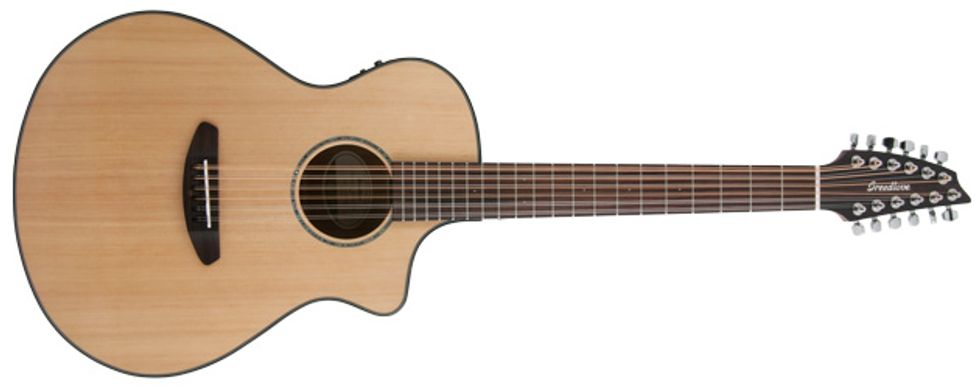
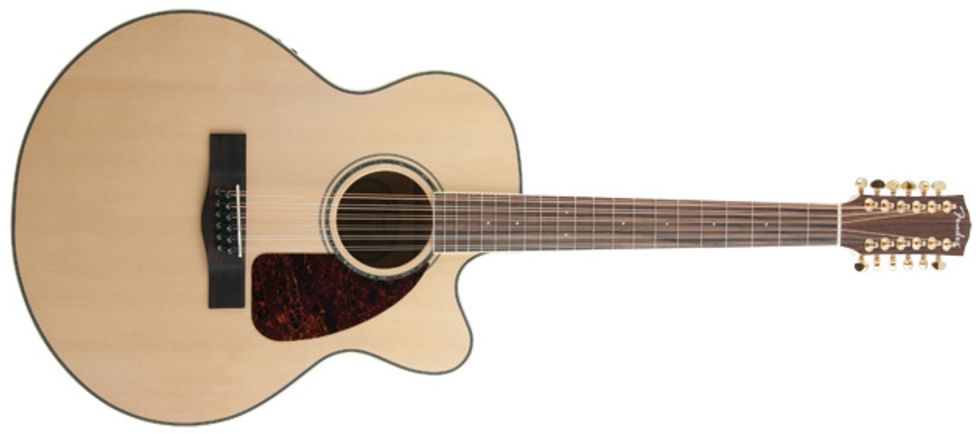
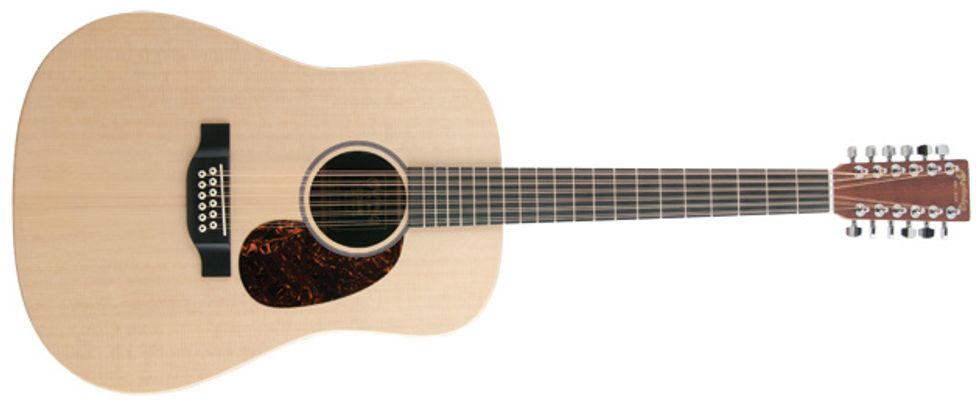
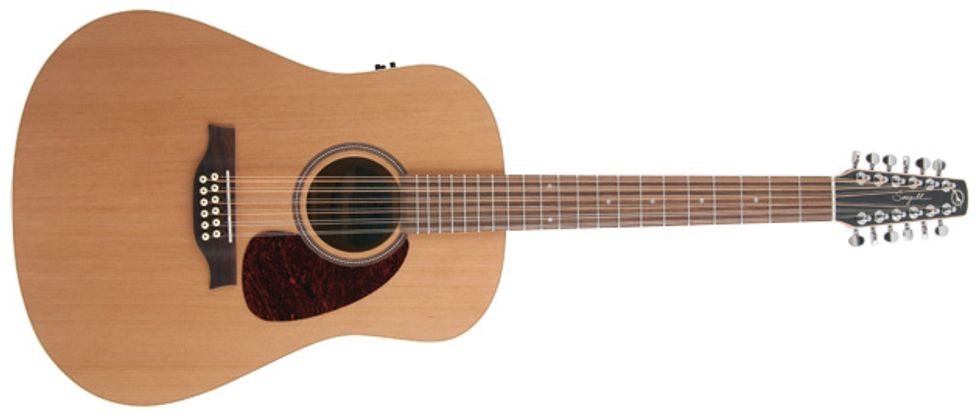

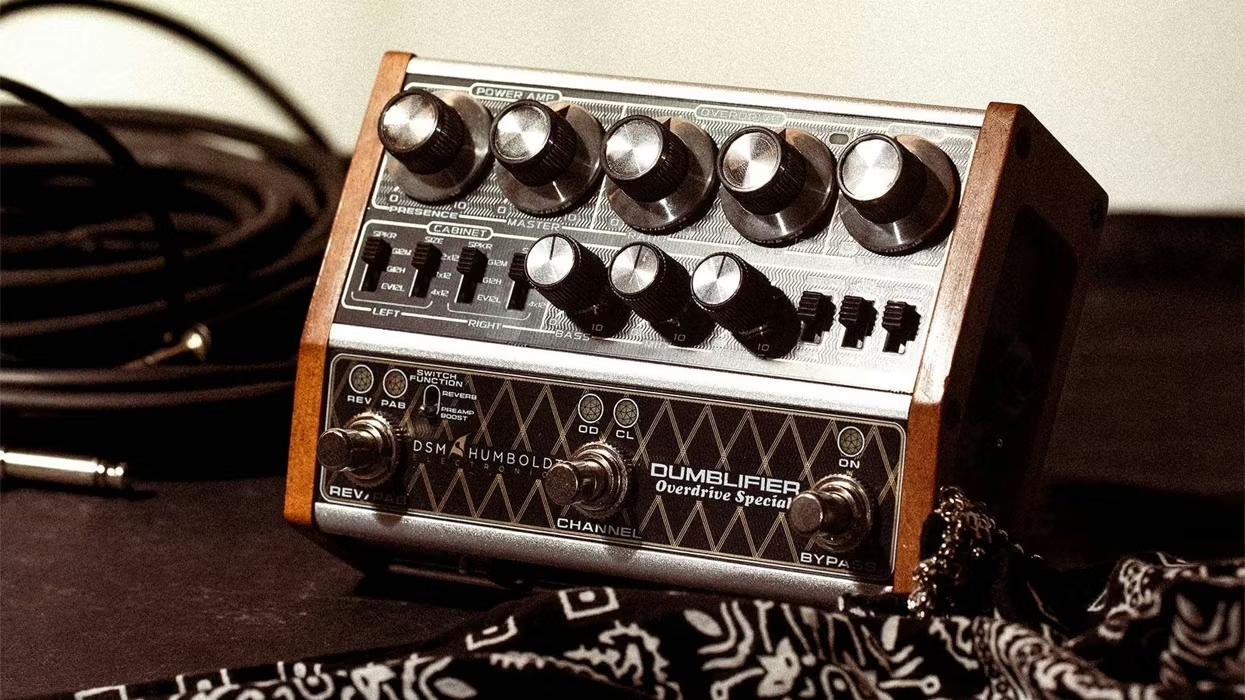




![Rig Rundown: John 5 [2026]](https://www.premierguitar.com/media-library/youtube.jpg?id=62681883&width=1245&height=700&quality=70&coordinates=0%2C45%2C0%2C45)


![Rig Rundown: Russian Circles’ Mike Sullivan [2025]](https://www.premierguitar.com/media-library/youtube.jpg?id=62303631&width=1245&height=700&quality=70&coordinates=0%2C0%2C0%2C0)








